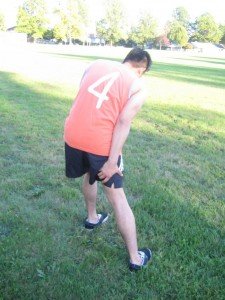An individual with thoracic spinal stenosis can suffer from annoying symptoms. Spinal stenosis occurs once the bony canal in which the spinal cord becomes constricted or narrowed and presses on the spinal cord. Even though spinal stenosis typically occurs in the neck and lower back regions, it rarely involves the thoracic spine in the upper and middle back.
When it comes to thoracic spinal stenosis, it is typically seen among individuals who have underlying conditions that leads to unusual growth of the bone.
Pain from stenosis
Pain is the usual symptom of thoracic spinal stenosis. In some individuals, the pain is characterized as a burning sensation in the calves or thighs. In other cases, the pain can be a dull ache in the lower back.

The pain due to thoracic spinal stenosis can be aggravated by movement. A distinguishing feature of thoracic spinal stenosis is the pain in the back will not radiate down the legs, which can be used to differentiate it from sciatica. Instead, the pain is usually limited to one area in the body.
Muscular issues
Weakness of the muscles is common with thoracic spinal stenosis especially in the legs. Some individuals with this condition can experience issues with walking as well as maintaining their balance while standing. It is important to note that the leg muscles can also be unusually rigid.
Changes with sensation
Individuals who have thoracic spinal stenosis can also experience altered sensation especially in the lower body. The issues with sensation are often limited to the regions that are supplied by a specific region of the spinal cord called as dermatome.
The higher the region of the thoracic spine affected by stenosis, the higher the area where there is diminished sensation. If there is stenosis of the upper areas of the thoracic spine, it can lead to issues with sensation around the upper chest as well as the area surrounding the shoulder blades.
Injuries sustained on the base of the thoracic spine can cause issues with sensation around the lower regions of the abdomen and back. A ‘pins-and-needles’ sensation can also be felt in both lower legs.
Positional changes and diagnosis
Some individuals who have thoracic spinal stenosis might find that being seated or straightening the upper back helps reduce the symptoms. The deep tendon reflexes which are tested by striking the knee and other parts of the body with a reflex hammer can also be heightened or reduced. Imaging tests such as MRI can be used to identify the cause as well as the severity of the spinal stenosis. In case the individual is worried about the symptoms of thoracic spinal stenosis, it is best to set an appointment with a doctor to determine the cause and suitable treatment for the symptoms.
